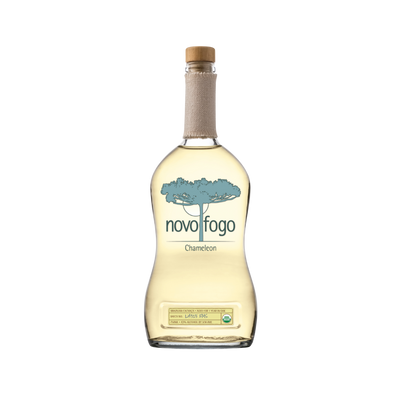Other Cachaça
What is Other Cachaça?
Other Cachaça represents a distinct category that encompasses all cachaças produced using fermentation agents beyond the traditional wild yeasts found naturally on sugarcane. This classification includes spirits made with added commercial yeasts, bacterial cultures, or other fermentation starters that producers introduce to control and direct the fermentation process. What defines Other Cachaça is this deliberate intervention in fermentation, which often results in more predictable flavor profiles and can produce cleaner, more consistent spirits compared to their wild-fermented counterparts.
Learn More About Other Cachaça
What makes Other Cachaça unique?
Other Cachaça stands apart from traditional categories by breaking the conventional rules of production, aging, and flavor profiling that define most cachaças. These spirits might blend different sugarcane varieties, experiment with unconventional aging vessels like acacia or chestnut barrels, or incorporate unique distillation techniques that create entirely new flavor territories. Unlike the straightforward classifications of silver, gold, or premium aged cachaças, Other Cachaça represents the wild cards of the category—spirits that defy easy categorization while pushing the boundaries of what Brazil's national spirit can become.
How is Other Cachaça made?
Other cachaça starts with fresh sugarcane juice that's fermented with wild yeasts or commercial strains for 24-48 hours, then distilled in copper pot stills or stainless steel column stills to capture the spirit's characteristic grassy, vegetal notes. The clear spirit can be bottled immediately as silver cachaça or aged in wooden barrels made from native Brazilian woods like amburana, jequitibá, or bálsamo, which impart unique flavors ranging from vanilla and cinnamon to herbal and spicy notes. Unlike rum, which often uses molasses, authentic cachaça must be made directly from fermented sugarcane juice, giving it a fresher, more agricultural character that reflects the terroir of Brazil's sugarcane regions.
How do you drink Other Cachaça?
Cachaça shines brightest in cocktails, most famously in Brazil's national drink, the Caipirinha, where it's muddled with lime and sugar to create a refreshing, tart sipper. While premium aged cachaças can be enjoyed neat or on the rocks to appreciate their complexity, the spirit really comes alive in tropical cocktails, batidas (fruit-based drinks), and modern craft cocktails that play up its grassy, vegetal character. The best times for cachaça cocktails are during warm weather gatherings, beach parties, and summer barbecues when its bright, energetic profile perfectly matches the festive atmosphere.
How do I choose a good Other Cachaça?
When selecting an Other Cachaça, look for bottles that clearly state their production method—whether they're aged in specific wood types like amburana or oak, or if they feature unique filtration processes that set them apart from standard silver cachaças. The cocktail you're planning matters significantly: choose a wood-aged cachaça with vanilla and spice notes for sipping neat or in spirit-forward drinks like an Old Fashioned variation, while opting for filtered or rested versions that maintain grassy, vegetal notes for classic caipirinhas where you want the sugarcane character to shine through the lime and sugar. Always check the label for "artisanal" or small-batch indicators, as these producers often employ traditional copper pot stills that create more complex, characterful spirits worth the extra cost.
Nutritional Information
Typical Calorie Range per Ounce: 64-69 calories
Typical Carbohydrate Range per Ounce: 0-0.1 grams
Typical Sugar Range per Ounce: 0-0.1 grams
Typically Gluten Free: Yes
Since cachaça is distilled from sugarcane juice rather than grains containing gluten, it's naturally gluten-free. The distillation process removes proteins that could contain gluten traces. Always check detailed product information and labels to confirm gluten-free status, especially for flavored or specialty cachaça products that may contain additional ingredients.
Scrolled this far? Your reward? Other Cachaça Trivia!
- Cachaça was once so valuable that Brazilian slaves were paid with it instead of money, leading to the spirit being called "liquid currency." Portuguese colonists found it more profitable to trade cachaça than actual coins, and the practice became so widespread that the colonial government tried to ban cachaça production multiple times to protect their wine imports from Portugal.
- The wooden barrels used to age premium cachaça are made from over 30 different Brazilian hardwoods, each imparting wildly different flavors - from the vanilla notes of balsamo wood to the spicy kick of jequitibá. Some distilleries age the same batch in different woods simultaneously, then blend them like a master perfumer mixing essences.
- Cachaça is the only spirit that's legally required to be made in Brazil - it's actually written into Brazilian law that authentic cachaça can only be produced within the country's borders. This makes it more geographically protected than Champagne, Scotch whisky, or tequila, which can have production facilities in multiple regions.
- Brazilian bootleggers during Prohibition didn't smuggle cachaça into the United States - they smuggled the knowledge. Several former cachaça makers moved to remote areas of Appalachia and adapted their fermentation techniques to make moonshine, inadvertently influencing American white lightning production with Brazilian sugar cane expertise.
- The foam that forms on top of fermenting cachaça mash was considered so sacred by early Brazilian distillers that they believed it contained the spirit's soul. Many traditional producers still refuse to skim this foam, called "cabeça de alambique," believing it's essential for developing the spirit's character - a practice that can be traced back over 400 years.
Higher-proof spirits can be intense. Mix carefully, taste thoughtfully, and enjoy responsibly.
Gift message (optional)

